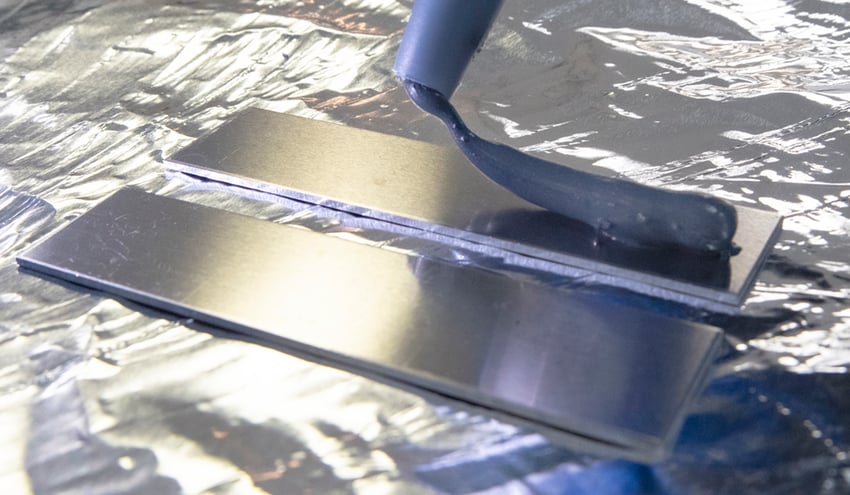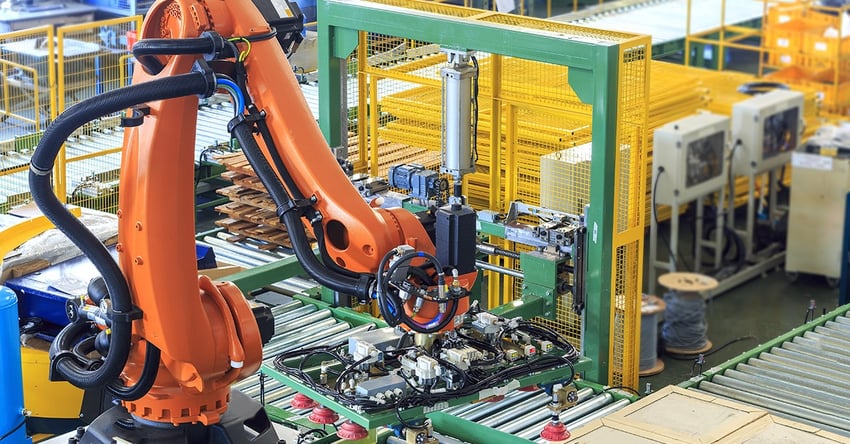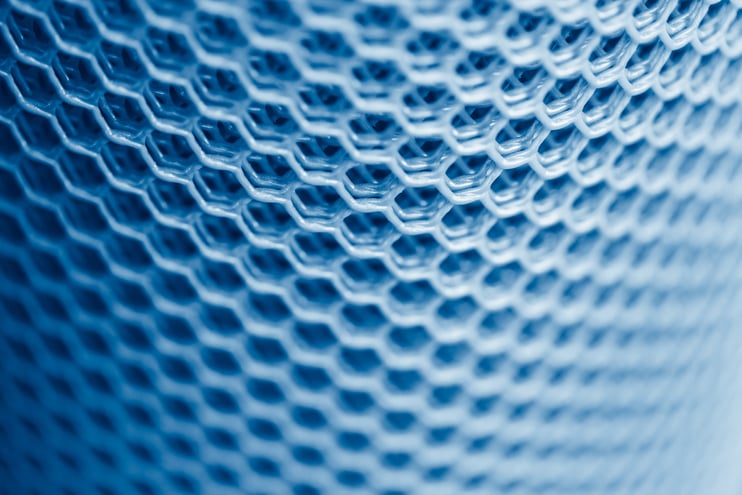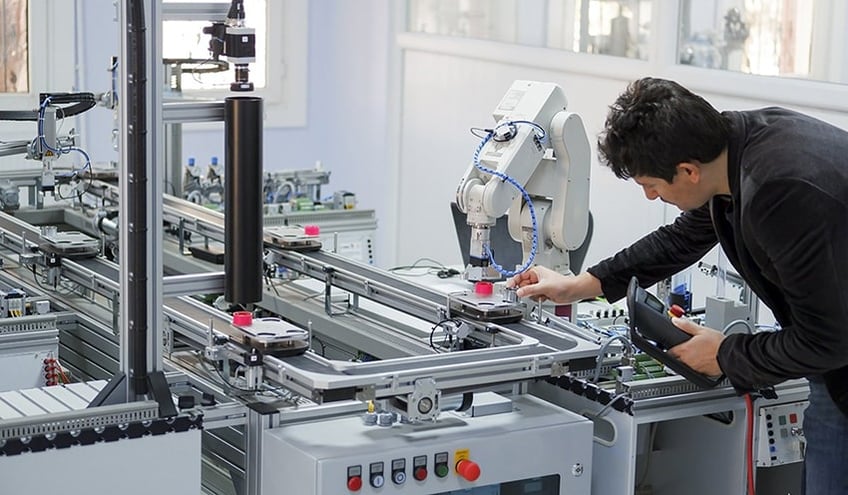Manufacturing is a team effort. And as such, when an issue arises with the product (usually caught when scrap rates skyrocket and returns, recalls, and warranty claims make it clear something was missed), it can be difficult to precisely isolate the root cause of the problem.
The interconnectedness of manufacturing processes naturally means that a problem in one area is not isolated in its effects to only that area. The consequences can even ripple out to delay, inflate costs, or derail vital product launches.
Let’s specifically look at bond failures (i.e., an incident where two materials were joined together and one or both failed to adhere to the other) and how they impact product launches. For example, a bond could be metal glued to metal, glass glued to plastic, paint sprayed on composite, a coating applied to wiring, or any other standard manufacturing procedure where proper functionality of a product is dependent upon materials adhering strongly to one another.
Rethink your adhesion manufacturing processes with Surface Intelligence.
When these bond failures occur, it often triggers expensive, destructive testing that's typically only done intermittently. What’s worse is that this testing rarely unveils the origin of the issue or a usable solution.
Frustrated manufacturers look at the materials and product designs, wondering why the puzzle doesn’t fit together. But unfortunately, you can’t design your way out of bond failure. Merely looking at the materials, adhesives, and coatings isn’t enough.
The overlooked component in a bond (and what, consequently, makes or breaks a bond) is surface quality.
If the material surfaces are not adequately and precisely prepared for an adhesive, paint, or coating, it’s only a matter of time before a product fails and the launch is impeded or worse.
Let’s look at some ways to avoid the endless cycle of fruitless testing by looking deeper at material surfaces, their preparation, and the measurement of surface quality that can alleviate problems that negatively impact product launches.
The Importance of Surfaces
Those developing and designing new products often don’t discuss surface quality at the beginning of product development. Therefore, surfaces of unknown bondability make their way through the process without being checked, resulting in low reliability downstream and confusion as to where the issues originated.
But when surface quality is considered a part of early-stage risk failure analysis, the true root of bond failures can be uncovered before they wreak havoc.
It’s widely understood that considering every aspect of a build and mitigating failures at the earliest possible time is the most direct path to achieving flawless manufacturing. But neglecting to consider surface quality and how it uniquely determines the strength of adhesion in testing can be a fatal flaw.
The Public Face of Adhesion Failure
When adhesion failure occurs post-product launch, it’s no longer an internal matter and can lead to a public perception of low-quality products and unreliability. For instance, in recent years, many mobile and wearable devices have struggled to hold their glass faces in place.
Electric vehicle manufacturer, Lucid is the most recent victim to fall prey to poor adhesion failure causing negative publicity, when tow eye brackets of one of their models were found inadequately bonded to the subframe, causing them to break at the joint when being towed.
Further investigation surfaced other adhesion-related issues with the subframe, affecting hundreds of already-sold vehicles. As a result, it was determined that the solution was to add another cleaning step in the manufacturing process to ensure that the surfaces were more prepared for bonding.
This could have been avoided if the surface quality was appreciated and accurately measured at the process design stage, allowing for a surface quality specification to be implemented at each step where the material surfaces have a chance of being altered. This would have especially been helpful during cleaning steps to ensure that the resulting surface has the molecular makeup that can chemically bond to the adhesive.
Sometimes adding a new cleaning step can be overkill or even inadequate. The only way to know for sure is to work alongside surface quality measurements throughout the entire product life cycle.
Surface Experts are Critical to Risk Assessment
Material surfaces must be scrutinized as much as any other aspect of manufacturing risk assessment.
When companies perform their FMEA (Failure Mode and Effects Analysis) or P-FMEA events (Process Failure Mode and Effect Analysis), there needs to be a conscious effort to understand the risks involved with low-quality surfaces.
As with any proper FMEA or P-FMEA, these technical risks can only be identified and understood by a corresponding process or subject matter expert. Unfortunately, many organizations don’t always possess experts in every relevant area of their processes, so they cannot identify the potential risks or put measures in place to manage them.
Selecting materials and adhesives is often where the assessment begins and ends when ensuring adhesion reliability. Managing those selections is essential to good outcomes, but if there is no conversation about the quality of the material surface, then the work is only half done.
That’s why companies who engage with surface intelligence experts during this initial stage can eliminate issues before they happen and avoid fatal consequences down the road. However, frequently companies do not bring surface experts in until they experience a product failure. In many cases, these failures can prevent a product launch or, if they occur post-launch, result in costly recalls.
Better Adhesion, Better Process
The costs associated with ignoring or forgoing surface quality specifications exist beyond mere recalls and returns, although that’s where they are most evident. Instead, the actual loss can be seen in the opportunities not taken. Opportunities to fine-tune processes and gain further efficiencies that redound to products made at lower costs and faster rates.
Advanced manufacturing processes have enabled product innovation and small form factors, which is true for surface details. Successful adhesion relies on control of the infinitesimal characteristics of a material surface - the top few molecular layers. Cleaning and prepping surfaces are critical to creating surfaces that are ready to stick to adhesive or coating. But, without verification, it’s a guessing game.
Improving adhesion performance has many positive effects on manufacturing processes, including:
- Enhanced production speeds
- Greater production volume
- Reduction of launch delays
- Lower cost of material experimentation to try to improve adhesion results
- Boosted brand perception and awareness
- Better supplier relationships due to knowing whether or not they are the root cause of the adhesion problem
- Surface cleaning/preparation machinery selection and optimization
The Necessity of a Universal Surface Quality Specification
As stated earlier, there are many places throughout a manufacturing process where a surface has the opportunity to be altered, sometimes intentionally but often without anyone meaning to modify the surface. That’s why every pre-assembly step in the process needs to be understood and controlled to ensure a successful product launch.
The need for control also includes the supply chain of materials. Materials are handled and packaged many times before they arrive at the final assembly plant. Some parts arrive pre-assembled to some extent, and all of these play a role in the surface quality of the materials going through the final bonding processes.
What’s needed is a surface quality specification for all materials brought in through the supply chain. Without a standard quantitative evaluation, materials sent through the manufacturing process are not of equal quality. Variety in input guarantees a variety of output. And the variety can be halted at the incoming supply with a universal surface quality specification.
Optimize the power of next-gen connectivity with data & surface intelligence.
Avoid Harsh Chemicals by Controlling Surface Quality
Development teams often add processing steps designed to get surfaces to a state they believe will achieve high-quality bonding or coating performance. But the truth is, these steps are often unnecessary, expensive, harsh, unfriendly to the environment and/or workforce, or all of the above.
With the outlawing of volatile organic compounds (or VOCs), companies are unable to wantonly treat their surfaces with any chemical they can get their hands on to get it “cleaner.” In response, many companies are turning to plasma treatments to prepare surfaces. But without much understanding of how to use these plasma treatment devices with precision, manufacturers can inadvertently damage surfaces through overtreatment or barely do anything to the surface because they’ve undertreated it.
If companies define their material surface quality before assembly and throughout the manufacturing process, they can monitor and develop the perfect approach for their particular materials and final product.
Measuring surface quality can easily be replicated by dialing in parameters on surface treatment, and cleaning machinery allows development teams to lay out a process that eliminates guesswork and creates incredibly reliable products.
Avert Serious Risk & Delay During Product Launches
Understanding the impact of surface quality on outcomes can massively impact a product launch’s success. This detail is often left out of the process discussion, but if addressed at the earliest stages of development, the efficiencies and reined-in costs can be enormous.
To learn more about ensuring your product launch is faster, cheaper, and more reliable, download the eBook "The Advanced Guide to Transforming Product Development Through Surface Intelligence Data & Technology."

















